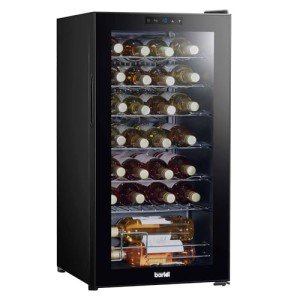You Are Responsible For An Fridges Budget? 12 Top Notch Ways To Spend Your Money
The Ultimate Guide to Buying a Fridge: Making Smart Choices for Your Kitchen
When it comes to necessary cooking area appliances, couple of products are as vital as a refrigerator. It is the heart of the cooking area— keeping your food fresh and your components at optimal temperatures. Nevertheless, selecting the ideal fridge can be a complicated task, given the variety of designs, sizes, and technologies offered on the marketplace. Kaleb Thomson will offer important insights into the factors to think about when purchasing a fridge, common types, and frequently asked concerns to help you make an informed choice.
Key Factors to Consider When Buying a Fridge
To simplify your decision-making process, here are the core factors one should think about when wanting to buy a fridge:
1. Size
- Cooking area Space: Measure the space in your kitchen where the fridge will be put. This includes examining entrances to make sure the fridge can be delivered without problem.
- Capacity: Consider just how much food you normally save. A bigger family may need a fridge with a capacity of 20-26 cubic feet, while smaller sized households might discover 10-18 cubic feet enough.
2. Design
- Top Freezer Refrigerators: A traditional option that includes a freezer on top. They are typically more economical and energy-efficient.
- Bottom Freezer Refrigerators: Offers convenience by placing the refrigerator section at eye level. Perfect for those who access fresh food more often.
- Side-by-Side Refrigerators: Provides easy access to both freezer and fresh food areas. Great for narrow kitchens.
- French Door Refrigerators: Combines the advantages of bottom freezers with side-by-side layouts. They often come with additional functions such as ice and water dispensers.
- Compact Refrigerators: Perfect for small areas like dormitory rooms or workplaces.
3. Energy Efficiency
- Look for energy-efficient designs to minimize electrical power bills. Examine the Energy Star label, which suggests that the appliance fulfills or surpasses energy performance requirements.
- Think about the typical yearly energy intake reported in kilowatt-hours (kWh).
4. Functions
- Ice and Water Dispenser: Convenient for instantaneous access to ice and filtered water.
- Smart Technology: Some fridges come equipped with Wi-Fi connectivity that allows you to keep track of and change settings from your mobile phone.
- Adjustable Shelves and Bins: For personalized storage to accommodate tall products.
- Temperature Level Control Zones: Different locations may have various environment controls for optimum storage of different foods.
5. Cost
- Set a budget. Fridge rates can range from a few hundred to a number of thousand dollars depending on design, size, and functions.
- Think about additional expenses such as prolonged guarantees, delivery, and installation.
Relative Table of Popular Fridge Styles
Fridge Style
Average Price Range
Pros
Cons
Top Freezer
₤ 400 – ₤ 1,200
Budget-friendly, energy-efficient
Limited features
Bottom Freezer
₤ 900 – ₤ 2,500
Easy access to fresh food
Can be expensive
Side-by-Side
₤ 600 – ₤ 3,000
Excellent organization, simple gain access to
Freezer space can be limited
French Door
₤ 1,200 – ₤ 4,000
Spacious, stylish, frequently feature-rich
Higher rate point
Compact
₤ 150 – ₤ 600
Space-saving, portable
Restricted storage capacity
Often Asked Questions (FAQs)
1. How long do fridges usually last?
Usually, a well-maintained refrigerator can last around 10 to 20 years. Routine maintenance, such as cleaning the coils and examining door seals, can extend its life-span.
2. How can I keep my fridge effectively?
- Keep the coils clean to assist maintain energy performance.
- Guarantee that the door seals are tight to avoid cold air from escaping.
- Regularly thaw (if relevant) and clean the interior to prevent build-up of germs and smells.
3. Do I need to pay for shipment and setup?
A lot of merchants charge for shipment and setup, however this charge can in some cases be waived throughout promos. Always verify the charges before completing your purchase.
4. What should I do if my fridge is not cooling correctly?
Start by checking the temperature level settings and make sure the vents are clear of any obstructions. If the problem persists, it may be needed to consult an expert repair work service.
5. How can I figure out the size of the fridge I need?
As a basic standard, permit for about 4 to 6 cubic feet of space per person in your household. However, this can differ based upon private cooking and storage routines.
Buying a refrigerator may appear simple, however it needs mindful factor to consider of various elements. By evaluating your requirements and preferences in terms of size, design, features, and energy efficiency, you're much better positioned to select a fridge that will serve your home well for several years to come. This guide aims to streamline the complexities associated with fridge shopping, empowering you to make a notified decision that will improve your cooking area experience. Whether you're upgrading or buying your first unit, a little research study can lead to a refrigerator that perfectly fits your lifestyle and cooking routines.
